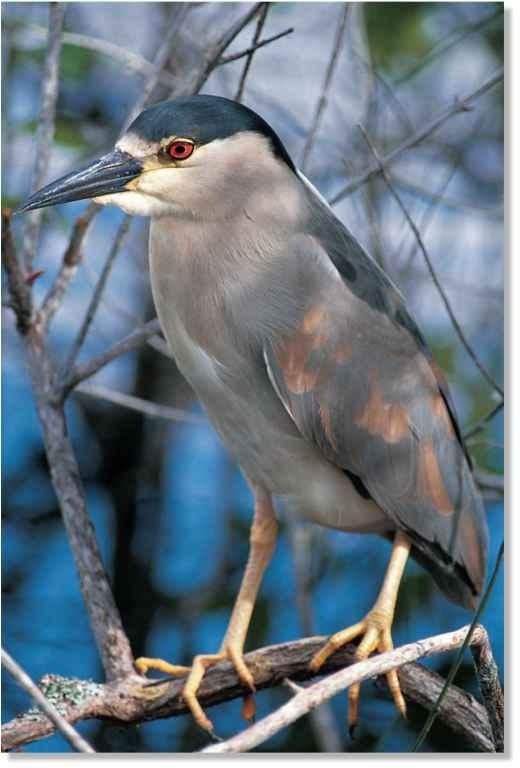ORDER
Ciconiiformes
FAMILY
Ardeidae
GENUS & SPECIES
key features
• It can feed by night, usually to avoid competition with day-active species of heron that are better adapted to hunting in aquatic habitats
• Large eyes help it spot prey — including aquatic creatures underwater — at dusk
• Spends the daylight hours roosting with other herons in a large colony
where in the world?
one of most widely distributed and numerous of all herons found in many parts of the world, including Europe, Asia, Africa, North and South America; also found on oceanic islands, such as Hawaii

LIFECYCLE
Although the black-crowned night heron may have to wait its turn while other, larger, species of heron feed, it is a successful and wide-ranging bird due to its flexible habits.
HABITAT
The night heron needs dense cover in which to spend the day and build its nest, as well as access to fresh- or saltwater feeding grounds. The heron nests and roosts in oak, pine, willow and mangrove trees. Where there are no trees, it makes do with reeds, bamboo or any bushy vegetation. It feeds near lakes and ponds, rivers and streams, swamps and marshes and sometimes also drier grasslands.
The heron favors warm temperate or subtropical areas, but is also found in cooler climates, such as those found in Canada, southern South America and the Falkland Islands in the South Atlantic.
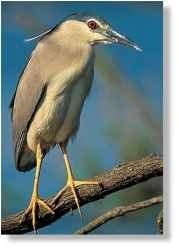
A Best of both worlds The night heron is at home in cool or warm areas.
River raider
This Kenyan waterway is a night heron habitat.
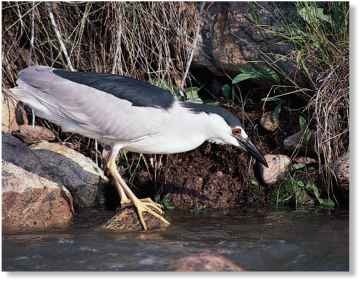
BEHAVIOR
The night heron is most active at dawn and dusk.During the day, it often faces competition at its feeding grounds from other species of heron, which are larger, with longer legs and necks, giving them an advantage in finding food. This is probably why the black-crowned species feeds mainly when it’s dark and the other species have returned to their roosts.
When there aren’t competing heron species nearby however; the black-crowned night heron commonly feeds by day At the height of breeding season, when young are hungriest, the heron may hunt at regular intervals throughout both day and night.
The black-crowned night heron has a fascinating range of ritualized displays, usually a part of courtship and breeding, in which an adult bird may offer a twig to its partner, wave its head, neck or wings and erect its feathers and head plumes. It also performs an elegant, hopping “ballet.”
Outside the breeding season, the heron migrates to warmer regions in winter, where it tends to be more solitary It’s quieter when not breeding and often goes unnoticed when it is roosting.
conservation
The night heron isn’t currently threatened; it may even be expanding its range, thanks to its ability to live in different habitats and the variety of prey it eats. It’s also unusually tolerant of human activities. In certain places it is affected by the draining of wetlands. In areas such as the farmed rice paddies of China, it may be regarded by humans as a competitor. In the Sahel region, south of the Sahara, local populations of the black-crowned night heron are threatened by repeated droughts.
BREEDING
The night heron breeds in colonies of from 20 to several thousand birds, in trees or among reeds, on cliff ledges, even open ground. Colonies resound with croaks and barks of young and adult herons.
The male starts building the nest, but the female completes it with twigs and other material brought by the male. Nests are spaced so birds are out of beak range of each other. In a season, the female lays one clutch (three to live eggs), but may lay a second.
The young hatch in two-day intervals. At first, adults pass food directly into each chick’s mouth, but after a few days just drop it into the nest. After six or seven weeks, the offspring are ready to leave the nest.
Cleaning up
A heron preens its feathers to maintain their efficiency.
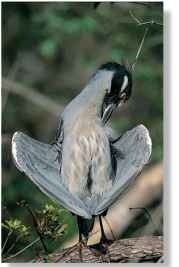
Herons have special feathers whose tips crumble into a powder. They spread this over their plumage to keep it water repellent and to absorb greasy deposits.
A night heron parent “bows” to its young before feeding them, showing its black crown and raising long, white neck feathers. If parents fail to greet them, the chicks see them as a threat and attack them.
What a racket! The breeding colony emits a variety of raucous calls.
^ Nurtured in the nest Both parents feed and care for their young.
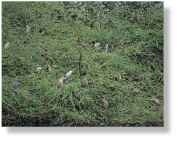
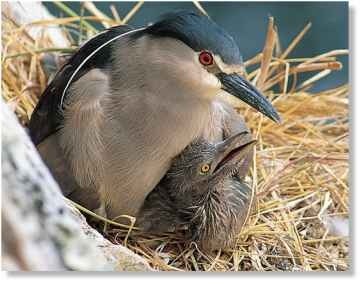
FOOD & HUNTING
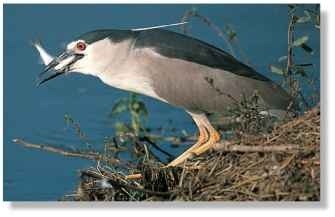
The night heron preys mainly on frogs, fish and insects, but also eats small mammals, young birds, flies, dragonflies, spiders, mollusks and worms.The heron generally stands statue-still on a waterside perch, waiting for prey to come past, but may also walk through water, hoping to disturb an animal. It also hovers, then dives into the water to catch a choice item.
furtive fisher
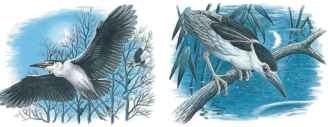
1 Set off…
As twilight falls on the colony, the herons take off and circle around, before leaving in a flock for the feeding grounds.
2 Watch and wait…
On arrival, the birds separate so each has its own territory. Much time is spent watching and waiting for prey to pass by.
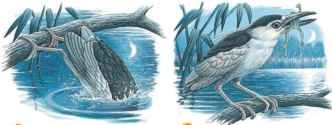
3 Take the plunge…
When the heron spots a victim, it lunges down to stab with its bill, but keeps a grip on the perch in case it misses its target.
4 Gulp
Success! The heron grips the prey in its bill, then gulps it down, often swallowing the victim before it has stopped struggling.
PROFILE
Black-crowned Night Heron
The black-crowned night heron feeds mainly at dawn and dusk, but also fishes during the day when it has nestlings to feed.
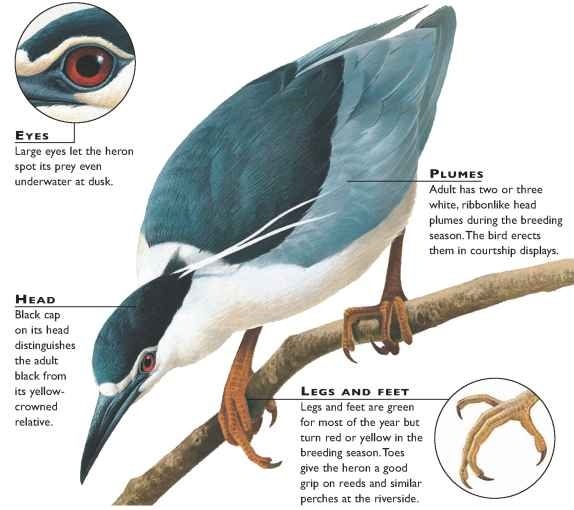
CREATURE COMPARISONS
An adult black-crowned night heron isn’t likely to be mistaken for any other bird, but its young resemble those of yellow-crowned night herons or American bitterns.The boat-billed heron has an unusual-looking, distinctive bill, with which it scoops fish and shrimp from the water; it’s sometimes classified in a family of its own.
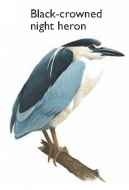

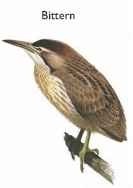
vital statistics
| Weight | About 1.5 lbs. |
| Length | 22-26″ |
| Wingspan | 41-44″ |
| Sexual Maturity | 2-3 years |
| Mating Season | April through August in North America |
| Number of Eggs | Usually 3-5; occasionally two clutches |
| Incubation Period | 21-26 days |
| Breeding Interval | Every year |
| Fledging Period | 42-49 days |
| Typical Diet | Frogs, insects, fish, mollusks, squirrels, worms crustaceans |
| Lifespan | Up to 25 years |
Related species
• The 60 species in the family Ardeidae include I bitterns, egrets and I herons. These medium-to large-size birds have a long neck and legs, broad wings and a slim body. A long bill for hunting is also typical of birds in this family. There are seven night heron species in the family Ardeidae; only two species are found in the Americas: the black-crowned and the yellow-crowned night herons.
